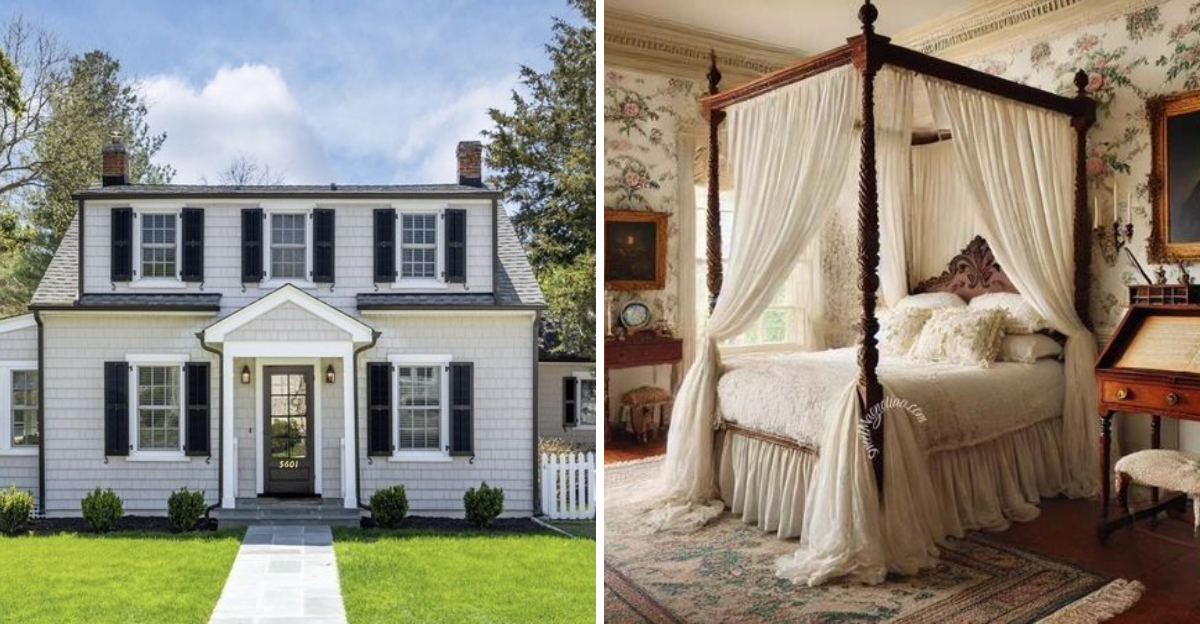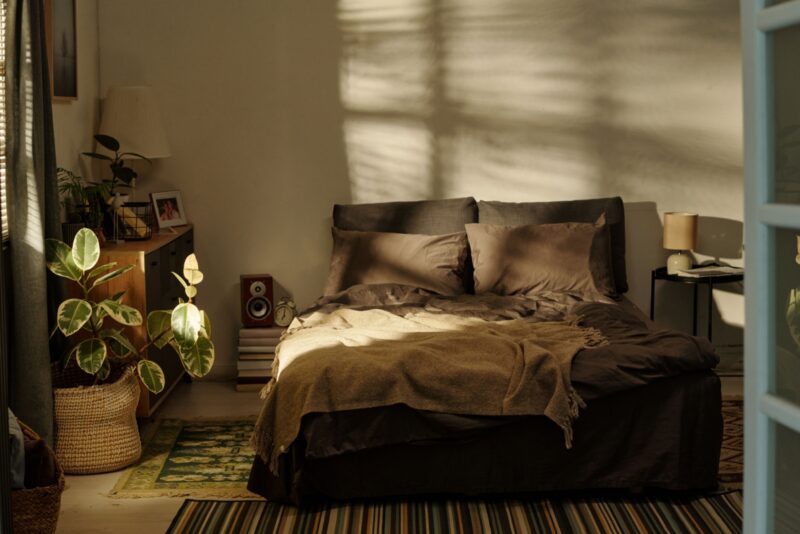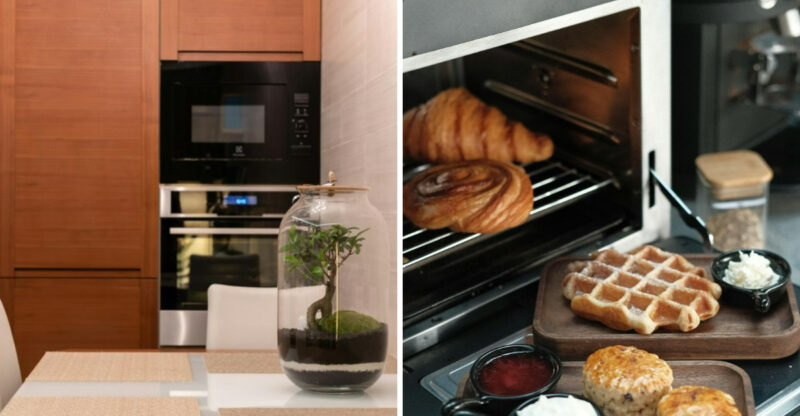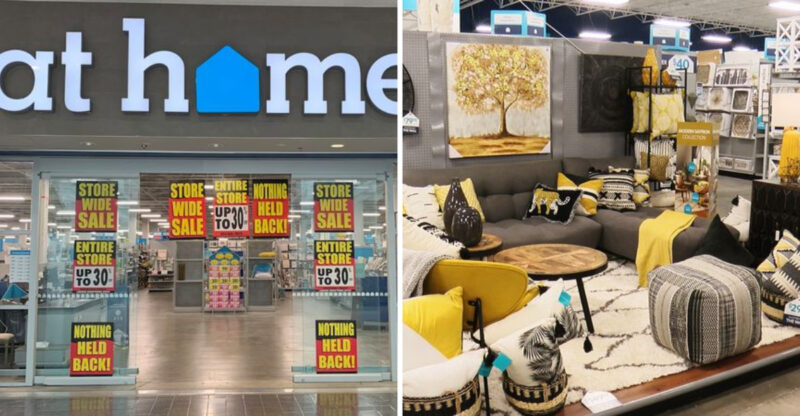18 Virginia Colonial Details That Still Feel Fresh

Virginia’s colonial architecture has stood the test of time, offering design elements that feel surprisingly modern despite their centuries-old origins. These classic features continue to inspire today’s homeowners with their simplicity, functionality, and timeless appeal. The enduring charm of Virginia colonial style proves that good design never truly goes out of fashion.
1. Symmetrical Window Arrangements
Perfectly balanced windows create a sense of harmony that never feels dated. The careful alignment speaks to our innate love of order while allowing natural light to flood interior spaces.
Modern homes still mimic this arrangement because it simply works, both aesthetically and functionally. The human eye naturally appreciates this balance, making colonial window patterns a perennial favorite.
2. Cozy Brick Hearths
Nothing says “welcome home” quite like a colonial-style brick fireplace. The warm, reddish tones and handcrafted quality bring instant character to any room.
Today’s designers often incorporate these hearths as focal points, even when they’re non-functional. The textural contrast of brick against smooth walls creates visual interest that contemporary homes often lack.
3. Wide-Plank Hardwood Floors
Those gorgeous, broad wooden planks weren’t just practical; they’re now the gold standard for elegant flooring. Original colonial floors tell stories through their patina and occasional imperfections.
Modern reproductions capture this same lived-in appeal. The natural variations in grain and color create depth that mass-produced flooring simply can’t match, bringing authentic character to contemporary spaces.
4. Painted Beadboard Wainscoting
Originally installed for wall protection, beadboard has become a beloved decorative element. The subtle vertical lines add texture without overwhelming a space.
Today’s homeowners embrace this detail in bathrooms, mudrooms, and beyond. Often painted in crisp whites or soft heritage colors, beadboard offers that perfect balance of traditional charm and clean simplicity that works beautifully in modern homes.
5. Brass Hardware Accents
The warm glow of unlacquered brass door knobs, hinges, and cabinet pulls brings an instant touch of history. These pieces develop a beautiful patina over time, telling the story of a well-loved home.
Hardware manufacturers now offer “living finishes” that replicate this aged quality. The contrast of warm brass against white painted woodwork remains as fresh and appealing today as it was centuries ago.
6. Transom Windows Above Doorways
Before air conditioning, these clever windows allowed air circulation while maintaining privacy. Their distinctive geometric patterns create beautiful light play throughout the day.
Modern architects incorporate transoms for their aesthetic appeal and ability to visually expand doorways. Whether featuring clear glass or delicate muntins, these windows add architectural interest that mass-produced homes often lack.
7. Built-In Corner Cabinets
Corner cabinets showcase treasured items while maximizing otherwise awkward spaces. The angled design draws the eye and creates architectural interest in rectangular rooms.
Today’s interpretations range from faithful reproductions to modern adaptations with glass fronts. These practical yet decorative pieces solve storage problems while adding character, a combination as valuable now as it was in colonial times.
8. Multipane Window Sashes
Before large sheets of glass were available, colonial windows featured multiple small panes. This practical necessity created a distinctive look that defines the style.
The geometric grid pattern adds visual interest to both exteriors and interiors. Modern energy-efficient windows often mimic this traditional divided-light appearance, proving that sometimes technological limitations lead to enduring design solutions.
9. Painted Tongue-and-Groove Ceilings
Look up in an authentic colonial home and you might spot this charming ceiling treatment. The subtle linear pattern adds texture without overwhelming the space.
Modern designers use this technique to add character to otherwise plain rooms. A soft blue-green ceiling, reminiscent of traditional “haint blue” porches, creates a peaceful atmosphere while nodding to historical building practices.
10. Windsor Chairs Around the Table
The iconic spindle-backed Windsor chair remains a design classic for good reason. Their elegant simplicity works in almost any setting, from farmhouse casual to refined traditional.
Modern interpretations come in updated colors and materials while maintaining the classic silhouette. The chairs’ lightweight design and comfortable shape make them as practical today as they were when first created.
11. Paneled Interior Doors
Solid wood doors with raised panels offer substance rarely found in newer construction. Their visual weight and satisfying sound when closed signal quality craftsmanship.
Contemporary homes often feature hollow-core knockoffs, but nothing compares to the real thing. The shadow lines created by true paneling add dimension and interest to hallways and doorways throughout the home.
12. Soapstone Kitchen Counters
Long before marble became fashionable, colonial kitchens featured practical soapstone surfaces. The natural dark gray material develops character with use, unlike modern countertops that show every mark.
Today’s homeowners appreciate soapstone’s heat resistance and subtle beauty. Its non-porous surface makes it naturally antibacterial, a feature as valuable now as it was centuries ago.
13. Painted Wood Shutters
Originally designed for protection from storms and privacy, shutters now add instant character to home exteriors. The contrast of dark shutters against light-colored clapboard creates timeless curb appeal.
Even non-functional decorative shutters frame windows beautifully. The simple rectangular shape with horizontal slats complements almost any architectural style, making this colonial feature adaptable to contemporary homes.
14. Pediment-Topped Doorways
The classical triangular pediment above an entry door signals importance and formality. This architectural detail draws the eye upward and creates a sense of grandeur.
Modern interpretations range from elaborate to simplified versions. Whether executed in wood or composite materials, this distinctive crown transforms an ordinary doorway into a welcoming focal point.
15. Hand-Forged Iron Hardware
The subtle imperfections of hand-forged hinges, latches, and pulls reveal their handcrafted origins. Each piece tells a story of craftsmanship that mass-produced hardware cannot match.
Modern blacksmiths continue this tradition, creating pieces with authentic character. The matte black finish contrasts beautifully with painted woodwork, adding visual interest to doors, cabinets, and furniture.
16. Formal Boxwood Gardens
The geometric precision of boxwood hedges brings order to outdoor spaces. Their evergreen structure provides year-round interest, even when flowering plants have faded.
Today’s low-maintenance landscapes often incorporate these colonial favorites. The classic combination of gravel paths between neatly trimmed hedges creates an outdoor room that feels both historic and completely current.
17. Whitewashed Brick Exteriors
The soft, irregular appearance of whitewashed brick creates depth that solid paint lacks. This traditional technique allows the texture of the brick to show through while brightening the exterior.
Modern designers recreate this look for its subtle, organic quality. The slightly weathered appearance feels both historic and fresh, perfect for homeowners who want character without a perfectly polished look.
18. Canopy Beds with Simple Fabric
Originally designed for warmth and privacy, canopy beds remain the ultimate statement piece. The vertical posts draw the eye upward, making even modest rooms feel more spacious.
Contemporary versions range from authentic reproductions to modern interpretations. Simple white cotton or linen drapery creates an airy, relaxed feel that works beautifully in today’s bedrooms.






